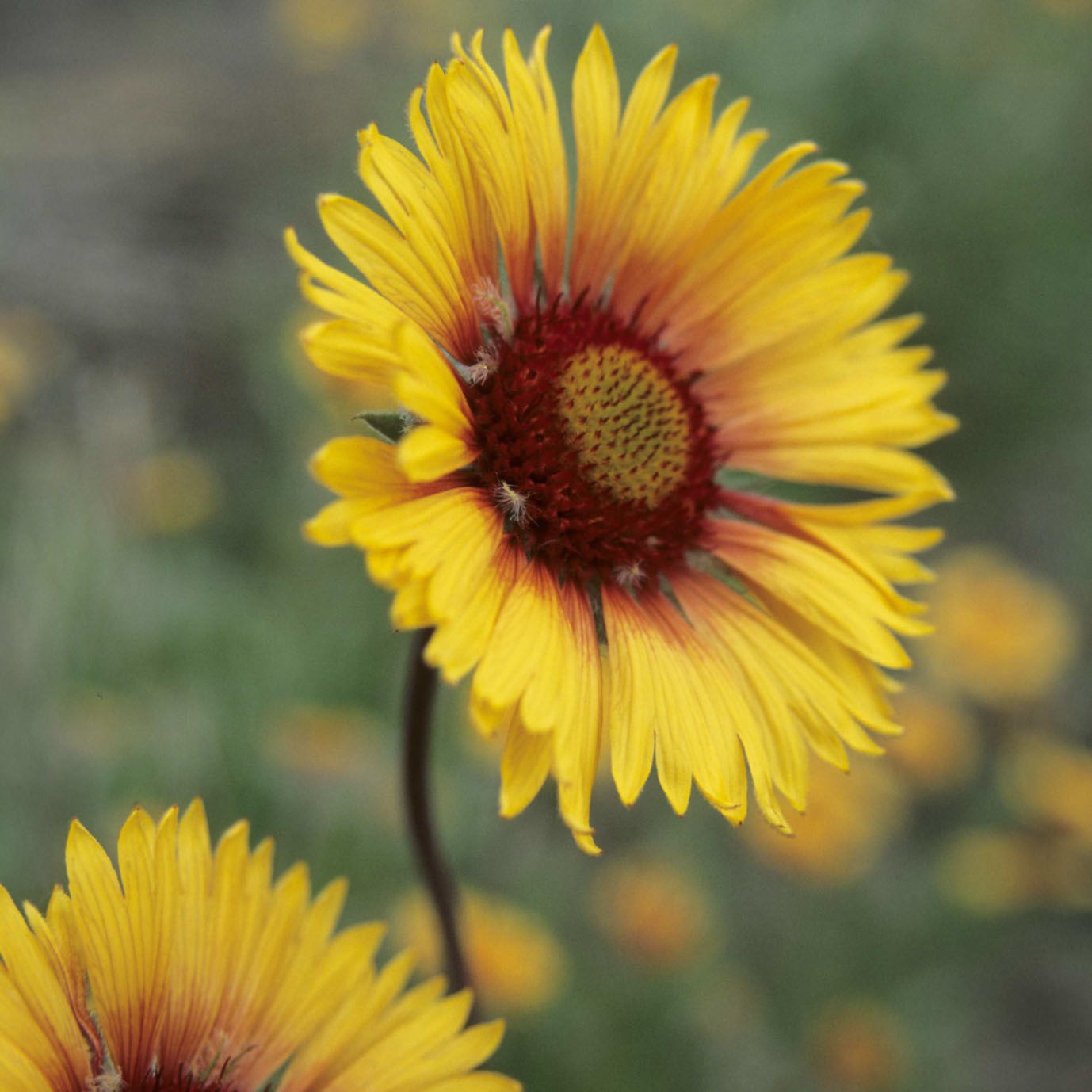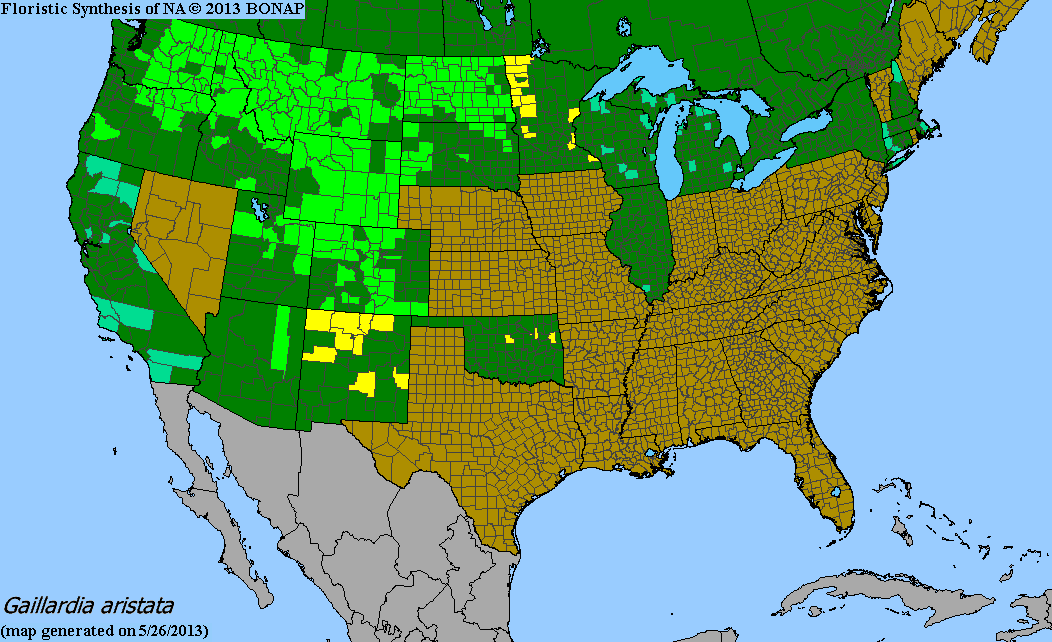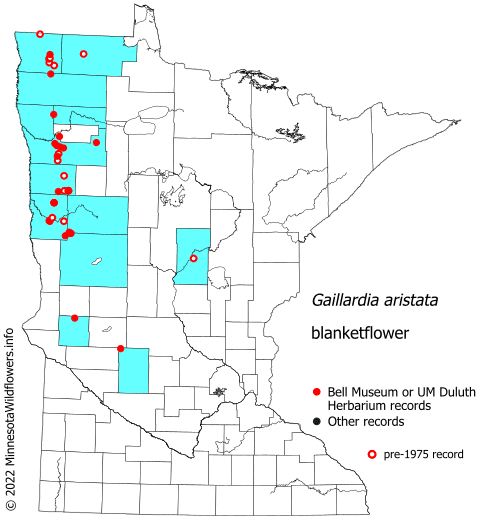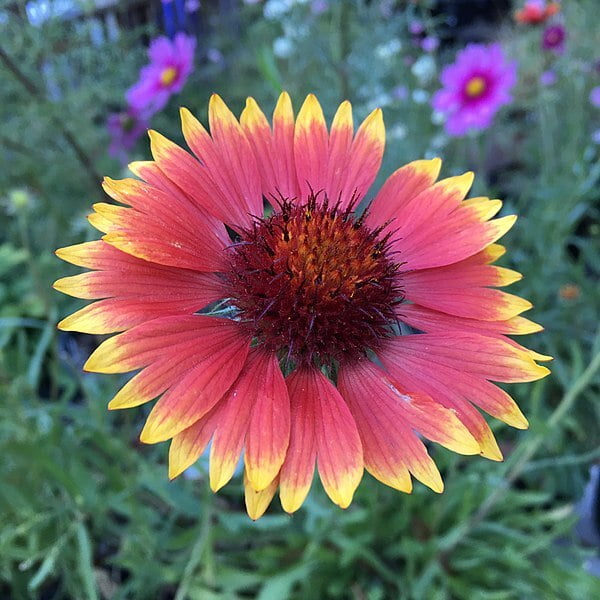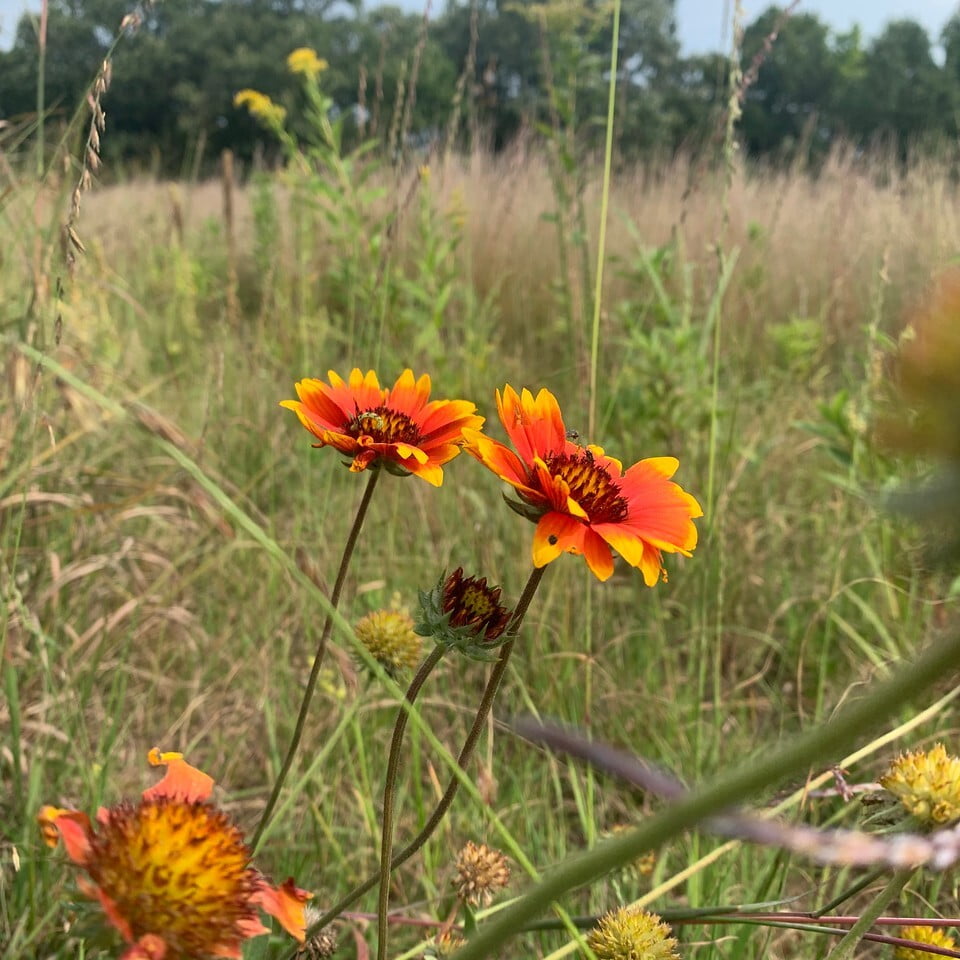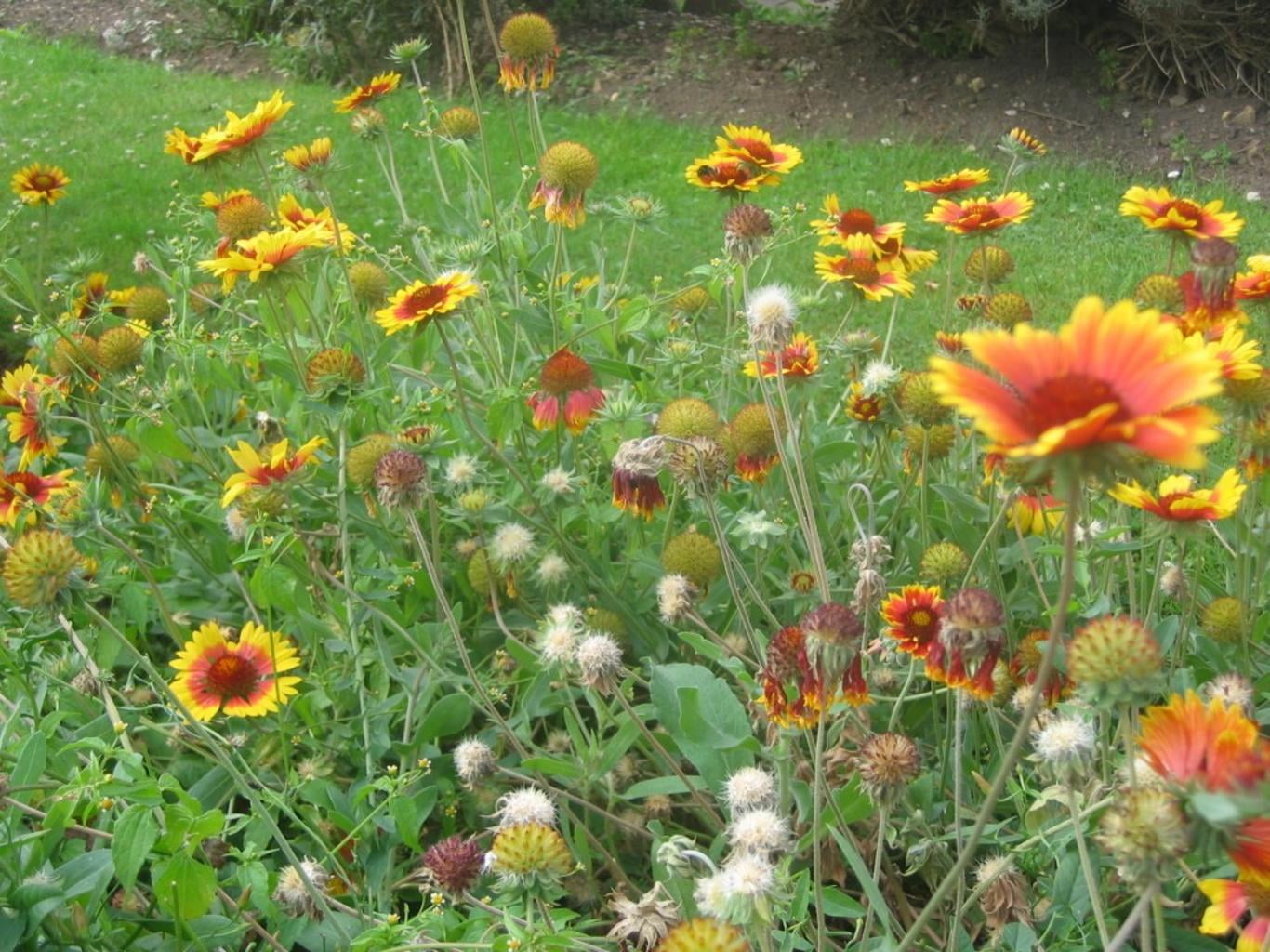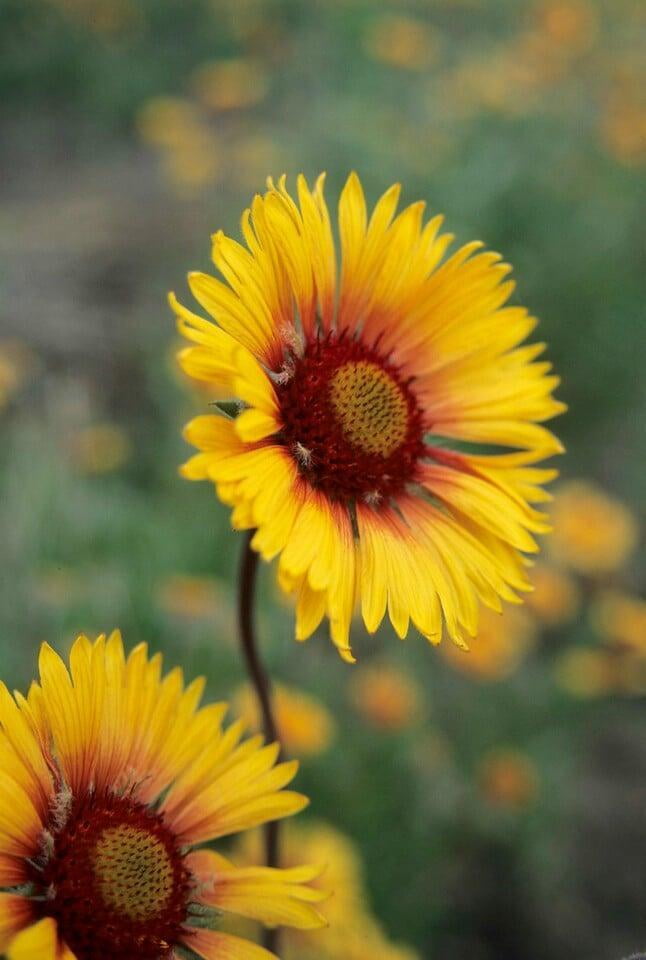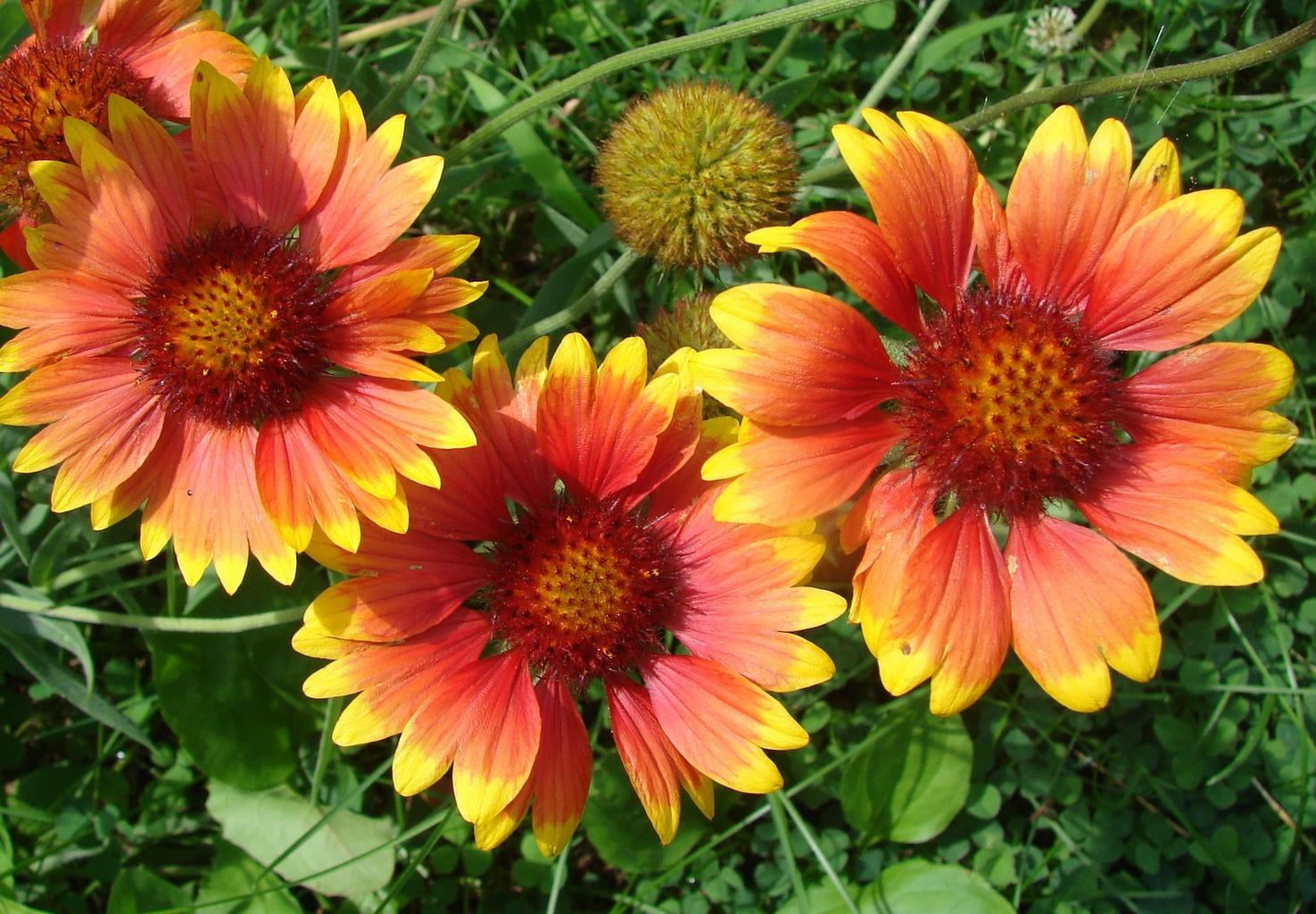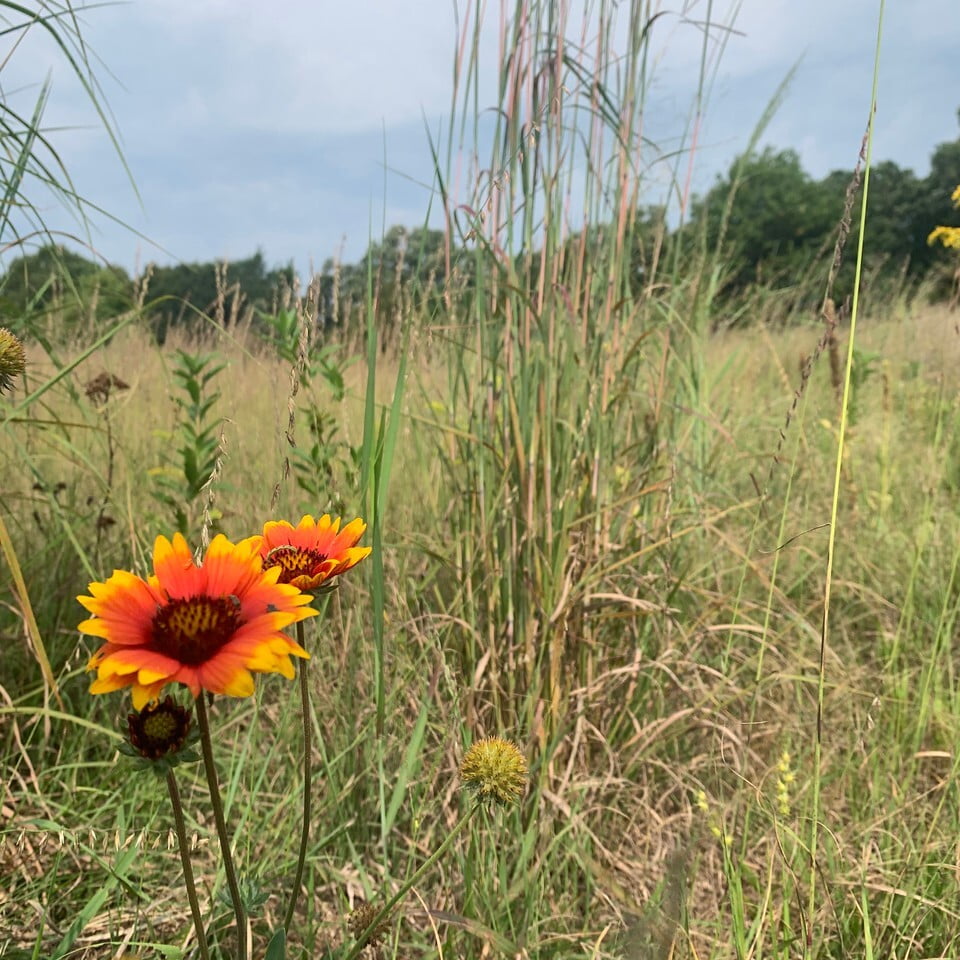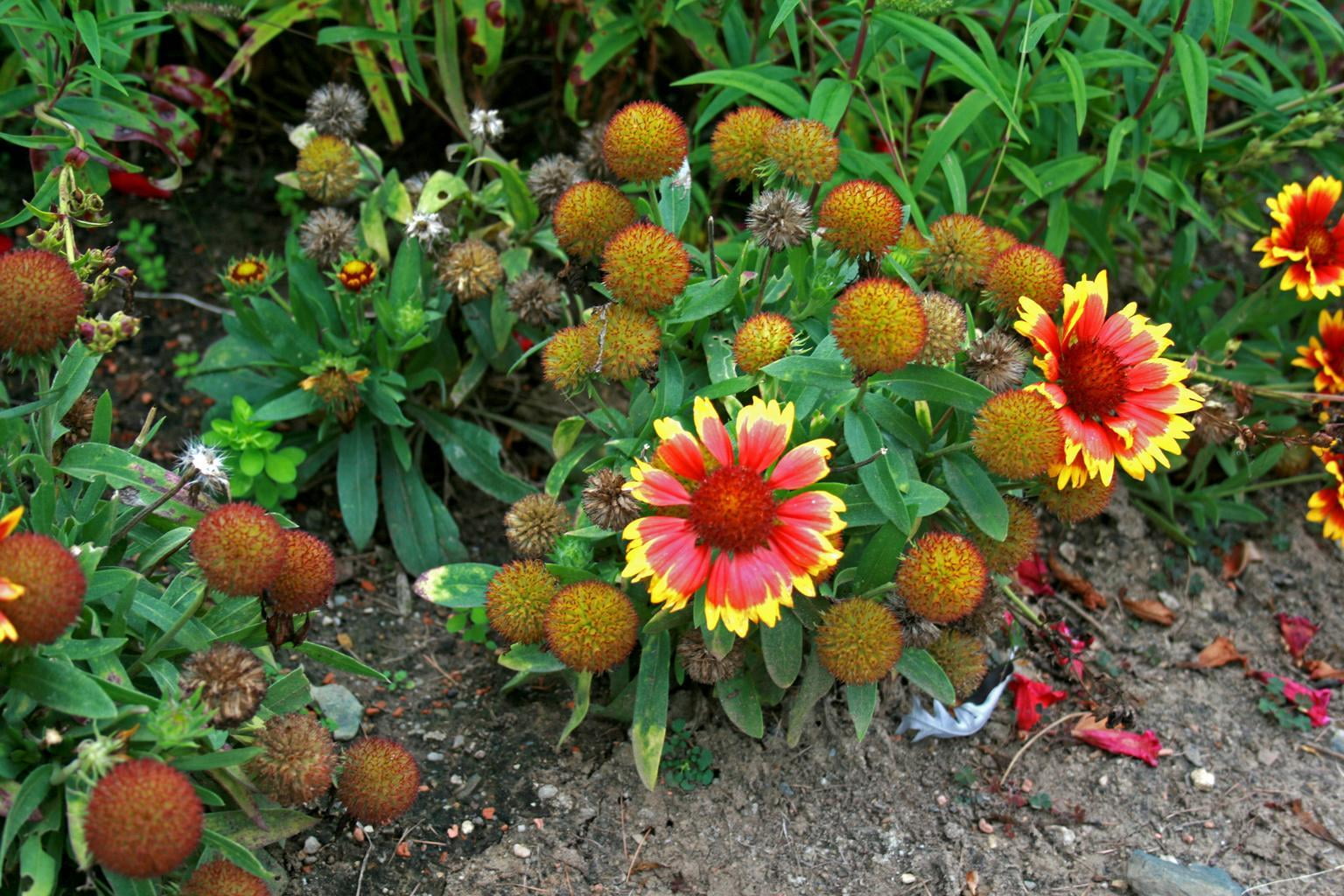Gaillardia aristata
Blanket flower Description:
Gaillardia aristata, commonly known as common blanketflower, is a herbaceous perennial plant belonging to the Asteraceae family. It is native to North America and is commonly found in dry meadows and prairies.
The plant has deeply lobed leaves that are green, and hairy, growing from a basal rosette. It produces striking, daisy-like flowers that are typically 3 inches wide with red or orange petals that have a yellow or orange center disk. The flowers bloom in the summer, from June to September, and attract a variety of pollinators, including bees, butterflies, and other insects.
Common blanketflower is a drought-tolerant plant that can thrive in a variety of soil types, including sandy, loamy, or rocky soils, and is often found in dry, sunny areas. It is a perennial plant that can grow up to 2-3 feet in height and has a clumping growth habit.
In addition to its ecological benefits as a pollinator plant and its ability to thrive in dry conditions, Gaillardia aristata is also a popular ornamental plant in gardens. Its bright, colorful flowers make it a popular choice for meadow gardens, landscaping, and as a cut flower. It can be propagated from seed or by division, and is relatively easy to grow.
Native Range:
Blanket flower grows natively in many of the Northern states as well as more commonly in the Western United States.
Standard Plant Information:
Plant Height: 1' - 3'
Bloom Time: May - September
Preferred Habitat: Does well in full sun. Often found in dry open prairies.
Sowing:
For most homeowners, the best option is to scatter seed on the ground by hand broadcasting at a minimum of 16-64 pls ounces per acre. For even coverage, we recommend that you broadcast seed in perpendicular rows across the site to ensure even coverage.
You’ll want to broadcast any grass seed first, which will get raked into the soil lightly. Next, it is ideal to mulch the area lightly with either a clean (no seed) straw or preferably with our native Little Bluestem straw, sold at our retail garden centers. After a light mulching is complete, now it’s time to broadcast your native wildflower seeds, which should not be raked into the soil. A good rain or watering is sufficient to cover the seed.
Planting:
Simply dig a hole in the soil slightly larger than the plant’s roots. Ensure that the soil line of the plant is maintained during the transfer (i.e. the plant should be at the same level with the ground as it was in the pot). Pack any loose dirt back around the plant and make sure you water it well the same day to ensure it has the best chance of survival.

